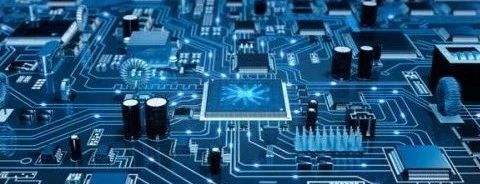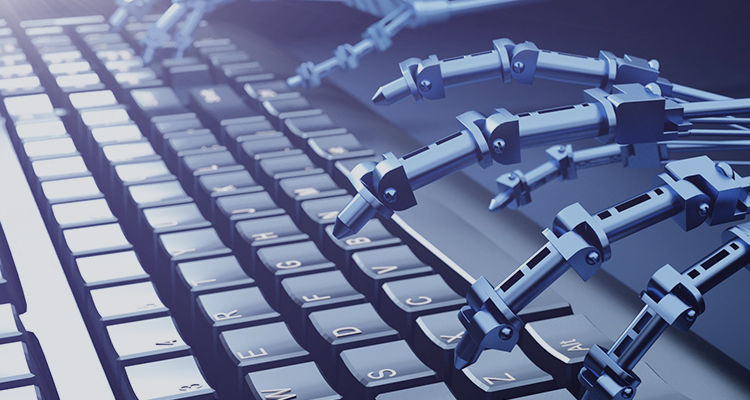PCB circuit board wastewater is also called printed circuit board wastewater. PCB circuit board wastewater contains heavy metal ions and has low biochemical properties. This article will introduce the treatment technology of circuit board production wastewater.
1. Characteristics of PCB factory wastewater
1. The printed PCB production process of the circuit board factory needs to undergo dozens of production processes such as inner layer treatment, electroplating, outer layer treatment, surface processing molding and final treatment from the outsourcing substrate to the final product. And the composition of various wastewater is very different.2. The production process of PCB printed circuit board is complex, and different wastewater will be produced in different production stages, and the composition of various wastewaters varies greatly.
3. The production wastewater of PCB printed circuit board can be divided into single panel, double panel and multi-panel production wastewater according to different wiring levels.
4. According to the types and forms of pollutants in wastewater, it can be divided into heavy metal-containing wastewater (including Cu2 +, Pb2 +, Ni2 +, etc., without EDTA, NH4 + and other complexing agents), fluorine-containing wastewater, and complex-containing wastewater (including Heavy metal ions, complexing agents, including heavy metal-EDTA complexes and heavy metal-ammonia complexes) and acid-base wastewater (containing dissolved organic matter, inorganic acids and bases, CN-, etc.).
5. In addition, a large amount of waste liquid will be generated during the production of printed circuit boards, mainly film waste liquid, chemical copper waste liquid and other bath liquids and electroplating liquids.

2. Treatment technology of printed circuit board wastewater
Because there are many nodes in the production of wastewater from printed circuit boards and their components are complex, there are currently two main methods for treating their wastewater, namely physical and chemical methods and biological methods, which mainly include coagulation precipitation, ion exchange, air floatation, and adsorption , Iron-carbon micro-electrolysis method, catalytic oxidation method, biodegradation method and combined treatment method, etc.2.1 Physical Chemistry
1) Coagulation method. In the production process of printed circuit boards, some high-concentration organic wastewater and heavy metal wastewater will be generated. For this kind of wastewater with complex water quality, the coagulation reaction can effectively remove the colloidal particles in the wastewater, etc., and can also form insoluble precipitates with the organic matter dissolved in the aqueous phase. Commonly used coagulants include inorganic coagulants and organic coagulants. Among them, inorganic coagulants are mainly FeCl3, Al2 (SO4) 3 and their polymers. Organic coagulants include cationic polymer coagulants, amphoteric organic polymer coagulants, anionic polymer coagulants and non-ionic coagulants.The emulsified waste liquid in PCB wastewater was acidified with sulfuric acid to pH = 2 for demulsification and oil separation treatment, and then lime milk was used for coagulation and sedimentation treatment of oil separation waste water, and the COD removal rate reached 85%. Chen Jinwen and others used two-stage coagulation sedimentation-aeration oxidation-sand filtration to treat printed circuit board wastewater, which can stabilize the effluent water quality, reaching 5 comprehensive wastewater discharge standard 6 level 1 standard, and effluent Q (COD) stable at 70 ~ 80mg / L between.
Combined use of neutralization precipitation, coagulation precipitation and sulfidation precipitation method to treat copper-containing wastewater in printed circuit board production plants, the results show that under the condition of controlling pH = 415 ~ 615, the quality is added according to the amount of 315 ~ 515mg / L Fraction of 5% sodium sulfide solution, after stirring for 4min, adjust pH = 815 ~ 915, add polyaluminum chloride solution (mass fraction of 5%) in an amount of 50mg / L and anionic polypropylene in an amount of 5mg / L Amide solution (mass fraction 0.11%), the mass concentration of Cu2 + in the treated wastewater is less than 0.15mg / L. The project test results show that the mass concentration of Cu2 + in the effluent reaches the first-level discharge standard stipulated in GB8978-1996 after treatment by this process route.
2) Air floatation method. The air floatation method is to introduce air into the wastewater and precipitate it from the water as a carrier in the form of tiny bubbles, so that the pollutants such as emulsified oil and tiny suspended particles in the wastewater adhere to the bubbles and float to the surface of the water with the bubbles to form foam -Three-phase mixture of gas, water and particles (oil), through the collection of foam or scum to achieve the purpose of separating impurities and purifying wastewater. Guo Yongfu et al. Used pre-treatment of coagulation and sedimentation-air floatation to remove the membrane-developing wastewater in PCB wastewater, and added flocculant at the outlet of the sump to form a water-insoluble flocculant. Then in the air floatation tank through the dissolved gas tank, the water dissolved in a large amount of gas is released into the air floatation tank through the pipeline and the nozzle, forming a muddy water gas mixture and floating on the water surface. After the wastewater is treated by air floatation, the concentration of organic pollutants is greatly reduced.
The air floatation method can effectively remove high-concentration organic matter in wastewater, and has the characteristics of convenient operation, good treatment effect and high degree of automation. Due to the small specific gravity, fine particles, and slow precipitation of organic polymer particles, the precipitation method not only has a small loading capacity of the sedimentation tank, but also requires a large amount of dosing. The general coagulation sedimentation or coagulation air floatation is not ideal for its treatment effect.
The use of diatomaceous earth to treat circuit board wastewater is to use its strong metal ion adsorption capacity to treat circuit board production wastewater containing higher concentrations of Cu, Zn, Ni and other metal ions and COD, with better results and lower operating costs. The effluent quality is far superior to the conventional treatment process. On the one hand, the engineering transformation includes the conversion of the original adjustment tank, reaction tank, and sedimentation tank into the adjustment tank of the diatomite treatment process; on the other hand, according to the needs of the diatomite treatment process, new corresponding structures are built, mainly diatomite Soil reactor, water collection tank, sludge thickening tank, filter press room, dosing room, air blower and automatic control equipment workshop, etc.
A new type of molecularly imprinted mycelium adsorption resin is used to treat printed circuit board wastewater, and the fungus is PenicilliumChrysoge-num. The molecular imprinted mycelium resin adsorbent not only has a large adsorption capacity for Cu2 + and other heavy metal ions, but also has a high adsorption rate. When the initial mass concentration of copper is 120mg / L, pH = 5, the static adsorption capacity is about 53mg / L, which is about 15% higher than that of commercial resin 732; the resolution rate reaches more than 85% in 1min. After 80 hours of continuous operation in the pilot plant, the copper concentration in the outlet wastewater was less than 110 mg / L. Compared with traditional treatment methods, this method simplifies the wastewater treatment industry, saves a lot of chemicals, and reduces wastewater treatment costs.
The advantages of the adsorption method are fast speed, good stability, and small equipment footprint. Its main disadvantages are higher investment, difficulty in adsorbent regeneration, and higher pretreatment requirements.
4) Iron-carbon micro-electrolysis method. The electrolytic material of the iron-carbon micro-electrolysis process generally uses cast iron scrap and activated carbon or coke. When the material is immersed in the wastewater, both internal and external electrolytic reactions occur. The product produced by the electrode reaction has high activity and can undergo redox reactions with various components in wastewater.Many difficult-to-biodegrade and toxic substances can be effectively degraded; at the same time, metals can be ranked in sequence with metal activities in wastewater The replacement reaction of heavy metal ions after iron occurs.
Iron-carbon micro-electrolysis is to remove pollutants in water through these actions. Bao Xuping uses acidified demulsification-iron-carbon micro-electrolysis-neutralization precipitation-SBR combined industrial treatment of printed circuit board development wastewater.After demulsification, the effluent enters the iron-carbon micro-electrolysis column, V (iron) BV (carbon) = 1B1, reaction Time 45min. After this pretreatment, m (BOD5) Bm (COD) increased from 0.114 to 0.136, and the heavy metal content in the wastewater was greatly reduced, which improved the biodegradability of the wastewater and laid the foundation for subsequent biochemical treatment.
5) Catalytic oxidation method. Catalytic oxidation refers to the oxidation reaction using metal materials Pt, Pd, Ni, etc. as a catalyst, and air, oxygen, ozone, etc. as an oxidant under certain pressure and temperature conditions, including / addition of oxygen 0 and / dehydrogenation 0 The role. Catalytic oxidation is used to enhance the decomposition of oxidants to accelerate the chemical reaction between pollutants in wastewater and oxidants and remove pollutants in water.
2.2 Biological and combined treatment
Due to the large changes in the quality and quantity of PCB wastewater, traditional treatment methods cannot maintain stable effluent water quality, produce large amounts of sludge, and cause secondary pollution, resulting in high costs. The biological method has the advantages of low cost, high benefit and no secondary pollution. For the treatment of printed circuit board wastewater, the currently effective method is biodegradation, which mainly uses sludge or natural microorganisms returned from sewage treatment plants to treat PCB wastewater. The removal rate of high-concentration PCB wastewater by biological methods is not high, and the degradation is not complete. Therefore, it is necessary to add chemical treatment to make up for the above deficiencies, that is, to treat printed circuit board wastewater with a combined bio-chemical treatment process. Therefore, the biological method is combined with other methods to treat circuit board wastewater. More and more attention has been paid to the coagulation-contact oxidation method, reverse osmosis-electrodeionization (RO-EDI) desalination system, acidified demulsification-iron-carbon micro Electrolysis-neutralization precipitation-SBR combination process, etc.
The reverse osmosis-electrodeionization (RO-EDI) desalination system for the preparation of high-purity water is applied to the reuse of industrial wastewater in the printed circuit board industry.The conventional pretreatment technologies such as manganese sand filtration and chlorine sterilization are used to make this primary The wastewater treatment meets the requirements of the RO device for influent; then select the anti-pollution RO membrane element to make the RO device; the use of an equal pore packed bed electrodialysis device as the EDI device can achieve zero discharge of industrial wastewater pollutants and zero wastewater Reuse resources.
The biological method can overcome the daily maintenance, replacement and secondary pollution problems required by traditional physical methods such as filtration and adsorption separation, and it has a better effect on the treatment of printed circuit board wastewater. In the microbial treatment plan, the biological contact oxidation method is more appropriate. On the one hand, it can adapt to the fluctuating changes of sewage load, and the large microbial biomass, relatively new metabolism and activity are relatively good, which improves the processing capacity of the equipment; on the other hand, because of the simple operation and stable operation, it brings convenience to debugging and operation. And it is not limited by the ratio of effluent BOD5, which is extremely beneficial to the degradation of organic matter in low-concentration wastewater. The main disadvantages of the biological method are long processing time, great influence from the external environment, and instability. The complexity of microbial structure determines that the mechanism of microbial treatment of printed circuit board wastewater is very complex, and it has not yet been uniformly understood.


